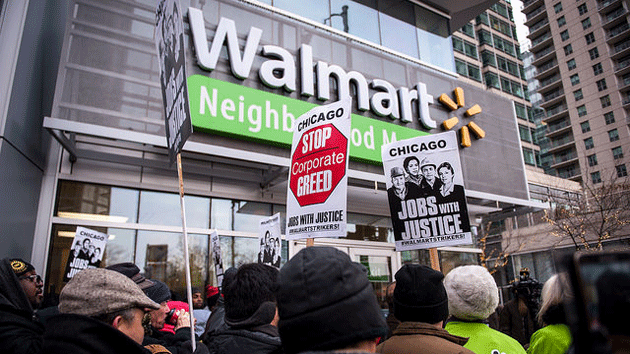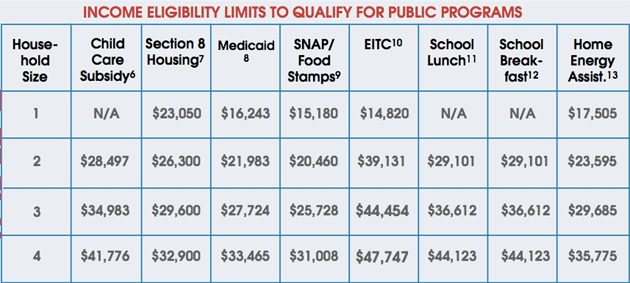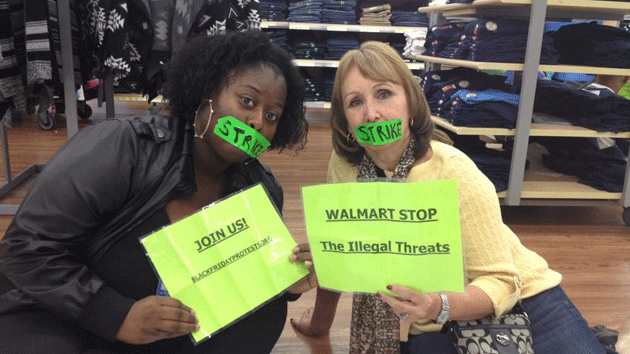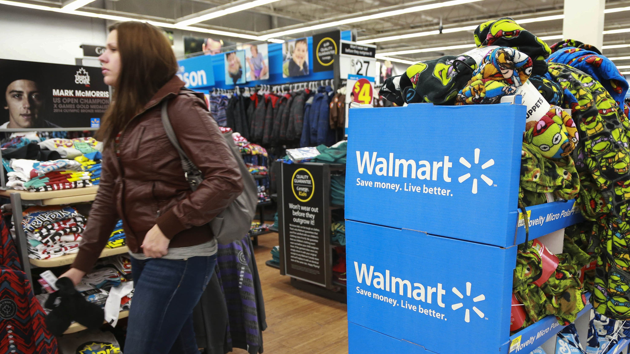
A Black Friday protest at a Walmart store in Chicago<a href="https://www.flickr.com/photos/ufcwinternational/15716560339/in/photolist-pWPtQg-qecJkS-phgFZo-qbYM4u-phv83T-pWFSmU-phgP3G-qeg8GD-qbYLuJ-pWPi7x-pWPti4-pWFZQw-pWFXth-qe5ZhP-pWPqtg-qecEQA-qecFxs-phvdzV-pWQSjk-phvfGv-qefUcx-qbYCsb-pWG4f7-pWPrkB-pWFS7f-qe5UDk-pWGVTU-qeg2y6-qecKc1-qefYAn-pWPmna-pWFYJJ-pWQP1M-phgQy7-pWG7p3-phgUwN-pWGaLy-qecGzh-qe5Q9P-pWPnqn-pWGX7f-pWG3d7-pWHacC-phvjTB-qecLsh-pWGb3W-phvfvt-phgBch-qe5Pc8-qecBMG">UFCW International Union</a>/Flickr
A typical Walmart Supercenter costs taxpayers more than $900,000 a year in public assistance doled out to its low-wage workers. This fact, published in a congressional report in 2013, galvanized labor protests at Walmart stores across the country last year, leading the retail giant to announce in February that it would give some 500,000 workers a raise. (Today, McDonald’s announced a similar increase). And that’s something. But according to a report released today by Americans for Tax Fairness, Walmart’s pay is still far too low to wean many “associates” from federal subsidies such as food stamps and Section 8 housing.
Under Walmart’s new plan, full-time associates who’ve completed a six-month training program will earn at least $10 an hour next year. Many Walmart workers, however, are involuntary part-timers, and nearly half of the associates turn over each year. But workers who qualify for the $10 base wage by working at least 34 hours a week, which Walmart considers “full time,” would still earn only $17,680 a year—well below the cutoff for many federal assistance programs, especially if a worker has children.

The four Walton heirs, who are collectively worth $144.7 billion, are Walmart’s largest stockholders and constitute the nation’s wealthiest family. If they wanted to stop enriching themselves at the expense of taxpayers, they could pay their workers at least $15 an hour for a 40-hour workweek. According to Americans for Tax Fairness, this would have cost Walmart about $10.8 billion in 2014, or about half of the increase in the Waltons’ net worth that year.
















